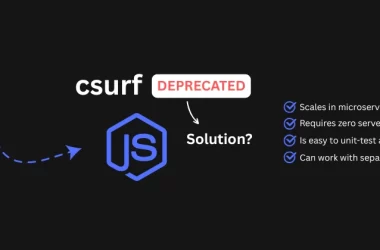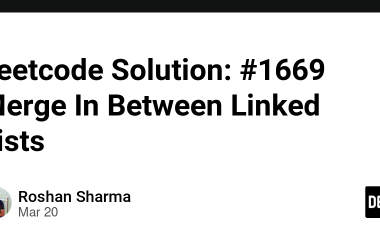Navigating the job market can feel like a daunting journey, especially when your resume seems to vanish into the void, leaving you without even a first interview. It’s a common challenge many job seekers face, but there’s good news – it’s not insurmountable. The key lies in crafting an effective resume, your golden ticket, that captures the attention of recruiters and potential employers. This article will guide you through the essential do’s and don’ts of resume writing, helping you shine in a crowded job market. Let’s dive in and learn how to create a killer professional CV that opens doors to new career opportunities.
🚫 Avoid These Common Pitfalls
Heavy Blocks of Text
It’s important to understand that recruiters often have limited time to review each resume. They typically skim through them to find key information quickly. This means that resumes with dense, long paragraphs are less likely to hold their attention. By contrast, resumes with clear, concise content are more effective in catching and keeping a recruiter’s interest.
Wrong Format
If a job ad specifies a format, follow it religiously. This could be due to compatibility with the Applicant Tracking System (ATS). Ignoring format specifications can lead to a resume being directly rejected or overlooked. The ATS may fail to parse critical information from the resume or incorrectly categorize it, resulting in a lower ranking among other candidates. This makes adherence to the specified format not just a matter of preference but a critical step in ensuring the resume is effectively reviewed.
Bad styling
The choice of text colors and fonts in a resume can significantly impact its professionalism. Bright, flashy colors or hard-to-read fonts can appear unprofessional and may distract from the content of the resume. It’s important to remember that a resume is a formal document and its appearance should reflect that.
Europass CV
While the Europass CV format has been widely used for years, it’s increasingly viewed as outdated in today’s dynamic job market. Employers no longer specifically require this format, opening the door for more contemporary and innovative resume styles. Consider adopting newer formats that allow for greater flexibility and personalization, ensuring that your resume effectively showcases your unique skills and experiences.
False Information
Never lie on your resume. Overstating your position or qualifications can backfire, especially if the truth surfaces later. Never lie on your resume. Being honest and transparent about your skills and experiences is the best policy. Integrity speaks volumes. Always.
Irrelevant and Really Old Employment History
Ensure that your work experience aligns with the role for which you are applying. Highlight transferable skills if you are transitioning between industries, but avoid listing irrelevant job experiences or positions held more than two decades ago. There’s no need to mention the job you had as a teenager unless you’re a very young candidate with no prior experience.
Too Much Personal Info
In most Western countries, details like your street address, gender, age, religion, marital status, or nationality are unnecessary and can inadvertently lead to unconscious bias in the recruitment process. Recruiters and hiring managers are humans and may hold subconscious prejudices that could influence their decision-making. The focus should be on skills, experiences, and qualifications relevant to the job.
Inappropriate Email Address
Using a current work email for job applications is not advisable. It can be seen as unprofessional or a breach of your current employer’s trust. Moreover, it could lead to awkward situations if your job search becomes known to your current employer.
Additionally, email addresses that are frivolous, suggestive, or unprofessional (like hotguy69@example.com) can create a negative impression. Such addresses can be seen as immature or unprofessional, potentially leading recruiters to question the applicant’s judgment and professionalism. Remember, the contact information on a resume is often the first thing recruiters notice.
Questionable Work Experience
It’s generally advisable to omit experiences where you were fired or left under contentious circumstances. Including such experiences can raise red flags for potential employers and lead to uncomfortable questions during interviews. Unless you are Sam Altman and the whole world already knows you were kicked out, so it doesn’t matter if you put that in your resume. Just focus on positive experiences and achievements.
Past Salary Info – A big NO
Including past salary details on a resume is generally considered inappropriate and irrelevant. A resume is meant to showcase your skills, experiences, and achievements, not your financial history. Mentioning past compensation doesn’t add value to your qualifications for the job.
Stating your past salaries can also inadvertently set a benchmark for future compensation. If your previous salary was lower than the market rate for the position you’re applying for, you might be unintentionally setting a lower expectation for your new salary. Similarly, if your past salary was high, it might lead potential employers to assume you’re out of their budget.
Unnecessary Info About Previous Employers and Experience
Including the full address of previous employers on a resume is generally unnecessary. It’s not typically relevant to your qualifications or the job you’re applying for. Including just the city is sufficient to provide a geographical context of your past work experience.
Also, while it’s important to provide a timeline of your work history, the exact start and end dates (day, month, and year) of each employment are not necessary. Instead, listing the duration in years and months is usually adequate and simplifies the resume. This approach still gives potential employers a clear understanding of the length of time you spent in each role.
Personal Hobbies and Interests
Given the limited space on a resume, it’s crucial to prioritize the most important information. Including hobbies and interests can sometimes take up valuable space that could be used to elaborate on your skills and experiences. Unless they’re directly relevant to the job or add a unique dimension to your profile, it’s best to leave out hobbies and interests from your resume.
Fluff and Buzzwords
Terms like “results-oriented,” “team-player,” or “hardworking” are often overused in resumes and have become clichés. These terms are so broad and subjective that they fail to convey meaningful information about the candidate’s actual skills and experiences. Using clichéd phrases can make your resume blend in with countless others, reducing its ability to stand out. Recruiters who see these terms frequently may overlook them, diminishing the impact of your resume.
Errors
Nothing undermines a professional resume more than typos and grammatical errors. Such mistakes can give the impression of carelessness and a lack of attention to detail. In a document that’s meant to showcase your best self, errors can be a major detractor.
It’s essential to thoroughly proofread your resume multiple times. This helps catch any errors that might have been missed in earlier drafts. Proofreading is not just about checking for spelling mistakes, but also for grammatical errors, punctuation, and consistency in format and style.
🟢 Do Implement These Strategies
Clarity and Brevity Speak Volumes
The most effective resumes are clear, concise, and to the point. You can utilize bullet points to break down information into easily digestible pieces. Each bullet point can highlight a specific skill, achievement, or experience, making it easier for the recruiter to identify the candidate’s qualifications. This format also encourages the writer to be more concise and to the point.
Also, make sure you use short, impactful sentences to help you make a stronger impression. These sentences should be action-oriented, emphasizing achievements and skills. For example, instead of saying “I was involved in project management,” a more impactful sentence would be “Led a team of 10 in a successful project deployment.”
Make Your Resume a Perfect Fit
Generic resumes rarely make the cut. On the other hand, customizing the resume for each application, including formatting and content, shows that you have put thought and effort into your application and demonstrates your understanding of the role and its requirements. This customization can make a significant difference, especially when the job market is highly competitive.
Numbers Tell a Story
Quantify your achievements where possible. Numbers provide a concrete measure of your capabilities and make your accomplishments more tangible and credible. They offer a clear and objective way to demonstrate the extent of your contributions and successes. This can be particularly persuasive to potential employers, as it provides them with a measurable indicator of your capabilities. The use of infographics can also be a nice addition, wherever appropriate.
Keep it Clean and Professional
Your resume’s layout should be clean and organized, making it easy for recruiters to scan and appreciate your qualifications. Small details like font choice and spacing can make a big difference. In the end, well-executed minimalism is always classy and gets the right attention. Opting for standard, easy-on-the-eyes fonts (such as Arial, Times New Roman, or Calibri) and colors enhances readability and presents a clean, professional look. Standard fonts are also more likely to be compatible with ATS systems, ensuring that the text is parsed correctly.
Color psychology can also be subtly employed to influence how recruiters perceive your resume. Different colors can evoke different emotions and associations. For example, blue is often associated with trust and reliability, which might be beneficial for positions in finance or law. However, it’s crucial to understand the culture of the industry you’re applying to, as color perceptions can vary.
A Summary Can Make a Big Difference
A resume summary is a brief section at the top of a resume that highlights your key skills, experiences, and achievements. It provides a quick overview of your professional background and what you bring to the table. It’s especially beneficial for experienced professionals to help them concisely present a long and varied career. It allows them to showcase their most significant accomplishments and skills upfront, ensuring that these highlights don’t get lost in a lengthy work history.
It’s also a great option for those who have undergone a career change. A summary is particularly useful in outlining transferable skills. It can help draw connections between past experiences and the requirements of the new field or position. For example, a former teacher moving into corporate training can highlight skills in presentation, curriculum development, and educational needs assessment.
If you have no experience, a summary could help you as well by focusing on educational achievements, relevant skills, and personal attributes. It’s an opportunity to showcase enthusiasm, potential, and how one’s skills align with the job requirements. Tailoring this summary to each specific job application can help you highlight your suitability and readiness for the role.
Remember: a summary should be brief yet impactful. Typically, a few sentences are enough to convey the essential aspects of your background. The goal is to be succinct but powerful in your language.
The Power of Keywords
In the age of digital recruitment, including relevant keywords is vital. Use terms and phrases from the job description. This not only demonstrates that you’re a good fit but also helps your resume get past applicant tracking systems (ATS) that use AI. These systems scan resumes for specific keywords related to the job opening. Resumes that contain more of these keywords are more likely to be passed on for further review by a recruiter or hiring manager. However, be cautious of overloading your resume with keywords that can make your resume seem unnatural and even be flagged by more sophisticated ATS as potentially manipulative.
A Picture is Worth a Thousand Words
A professional headshot adds a personal touch to your resume. It gives a face to the name and can help create a connection with the recruiter or hiring manager. The headshot should represent you in a professional manner. This means choosing a photo where you are dressed in professional or business-appropriate attire, similar to what you would wear to a job interview for the role you are applying for.
The photo should be of high quality, with good lighting and focus. Ensure that your face is clearly visible, and the expression is friendly and approachable. The background of the photo should be neutral and non-distracting. A simple, solid color background or a professional setting is preferable. Avoid busy backgrounds that can take the focus away from you.
Cultural and Industry Considerations: It’s important to consider the cultural norms and industry standards when deciding to include a headshot. In some cultures and industries, adding a photo is common, while in others, it can be seen as unprofessional or unnecessary.
Continuous Updates: Keep It Fresh
Treating your resume as a living document means recognizing that it should evolve over time. As you gain new experiences, skills, and achievements, your resume should be updated to reflect these changes. This approach keeps your professional profile current and relevant. If you have an online resume or a LinkedIn profile, regular updates are equally important. These platforms are often the first place potential employers or recruiters will look to learn more about you.
In a Nutshell
Creating an effective resume is an art that requires attention to detail, a deep understanding of the job market, and a personal touch in branding. By following these tips, you’re not just creating a document; you’re crafting the first impression a potential employer will have of you. Let your resume reflect your professionalism, skills, and unique personality. Knowing how to create a professional CV, you’re well on your way to securing that coveted interview and stepping into your dream job. Remember, a great resume is the first step to career success.
Good luck with your job search!
💡 Comment below to share your experiences and insights.
👉 Follow me on LinkedIn and stay tuned for daily valuable tips and amazing job opportunities!






